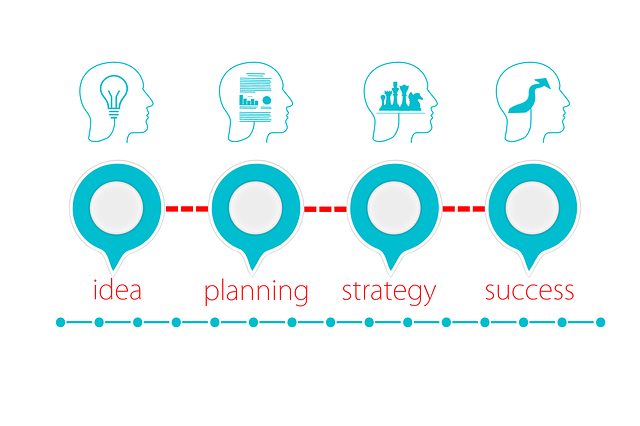Understanding the distinction between short-term and long-term capital is essential for effective financial management. Assessing capital needs involves analyzing current assets, liabilities, and future projections through capital forecasting to balance immediate liquidity with long-term growth. Strategies should optimize capital efficiency by diversifying investments, managing risk, and regularly reviewing goals, ensuring preparedness for both crises and sustained expansion in a dynamic economic landscape.
In today’s unpredictable economic landscape, securing adequate capital for emergencies is paramount. This article guides you through a comprehensive approach to meet both short-term and long-term capital needs. We’ll explore the nuances of distinguishing between these requirements, assessing your financial position, developing effective capital planning strategies, balancing commitments, and optimizing resource allocation. By mastering these techniques, you’ll enhance your ability to forecast capital needs and maximize efficiency with every dollar spent.
- Understanding Capital Needs: Distinguishing Short-term vs. Long-term Requirements
- Assessing Your Financial Landscape: Techniques for Accurate Capital Needs Evaluation
- Capital Planning Strategies: Building a Roadmap for Effective Resource Allocation
- Balancing Act: Navigating the Tightrope Between Short-term and Long-term Capital Commitments
- Optimizing Capital Efficiency: Tools and Techniques for Maximizing Every Dollar Spent
Understanding Capital Needs: Distinguishing Short-term vs. Long-term Requirements

Understanding your capital needs is crucial in navigating financial emergencies. The first step involves distinguishing between short-term and long-term requirements. Short-term capital is typically needed for immediate, unforeseen circumstances such as unexpected medical bills or car repairs. These urgent needs demand quick access to funds, making savings accounts, emergency funds, or easily liquidated assets ideal sources. On the other hand, long-term capital planning addresses more sustained financial challenges like retirement, home purchases, or business expansions. Here, strategies shift towards investments that offer consistent growth over extended periods.
Assessing capital needs involves a thorough analysis of your financial situation and future projections. Capital forecasting helps in predicting cash flow requirements while balancing short-term urgencies with long-term ambitions. Effective capital planning strategies optimize efficiency by ensuring resources are allocated appropriately. This includes diversifying investments, managing risk, and regularly reviewing financial goals to adapt to changing circumstances, thereby fostering resilience against unexpected financial emergencies.
Assessing Your Financial Landscape: Techniques for Accurate Capital Needs Evaluation

Assessing your financial landscape is a crucial step in determining accurate capital needs for both short-term and long-term emergencies. Start by evaluating your current financial position, including assets, liabilities, and cash flow patterns. This involves reviewing bank statements, investment portfolios, and any outstanding debts. By understanding these fundamentals, you can identify the gaps and vulnerabilities in your financial strategy.
Consider implementing capital planning strategies that balance short-term liquidity with long-term growth. Utilize forecasting models to predict future capital requirements based on economic trends, business cycles, and potential risks. Optimize capital efficiency by regularly reviewing and adjusting investment allocations, exploring cost-saving measures, and diversifying funding sources. This holistic approach ensures you’re prepared for both immediate challenges and future uncertainties.
Capital Planning Strategies: Building a Roadmap for Effective Resource Allocation

Capital Planning Strategies play a pivotal role in preparing for both short-term and long-term emergencies, ensuring organizations have a robust framework for effective resource allocation. The process begins with thorough assessing of capital needs, involving meticulous analysis of current assets, liabilities, and potential risks. This step is crucial for identifying immediate requirements versus future ambitions, balancing short-term liquidity with long-term growth.
Effective capital planning strategies incorporate capital forecasting, which involves predicting future cash flows and investment opportunities. By integrating this data into a comprehensive roadmap, organizations can optimize capital efficiency, ensuring funds are allocated to areas that maximize return on investment while also catering to unforeseen circumstances. This balancing act demands constant evaluation and adjustment, reflecting the dynamic nature of business operations and market conditions.
Balancing Act: Navigating the Tightrope Between Short-term and Long-term Capital Commitments

In the realm of capital management, a delicate balancing act unfolds when navigating the tightrope between short-term and long-term commitments. Assessing capital needs is not merely about gauging immediate requirements but also forecasting future demands, a crucial aspect of effective capital planning strategies. Organizations must adopt approaches that optimize capital efficiency while ensuring they have sufficient resources to tackle both unforeseen emergencies and sustained growth. This fine line requires businesses to carefully consider their capital allocation, understanding the trade-offs between investing in short-term liquidity versus long-term strategic initiatives.
Capital forecasting becomes a vital tool here, allowing entities to anticipate future cash flows, potential risks, and opportunities. By embracing diverse capital planning strategies, companies can strike a balance, ensuring they remain agile enough to seize market dynamics while maintaining financial stability over the long term. This balancing act is not just about managing resources; it’s a strategic maneuver to thrive in an ever-changing economic landscape.
Optimizing Capital Efficiency: Tools and Techniques for Maximizing Every Dollar Spent

In navigating the intricate landscape of financial management, understanding the distinction between short-term and long-term capital is paramount. While short-term capital caters to immediate emergency needs, long-term capital plays a pivotal role in sustaining operations and growth. Assessing capital needs involves a meticulous process of capital planning strategies that balance immediate requirements with future prospects. By employing robust capital forecasting techniques, businesses can predict potential risks and ensure they have the necessary resources to weather any storm.
Optimizing capital efficiency becomes a powerful tool when organizations utilize innovative techniques to maximize every dollar spent. This involves strategic allocation, cost-cutting measures without compromising quality, and leveraging technology for enhanced process automation. Through these methods, companies can ensure their capital planning strategies are not only effective in the short term but also foster sustainable growth over time.






